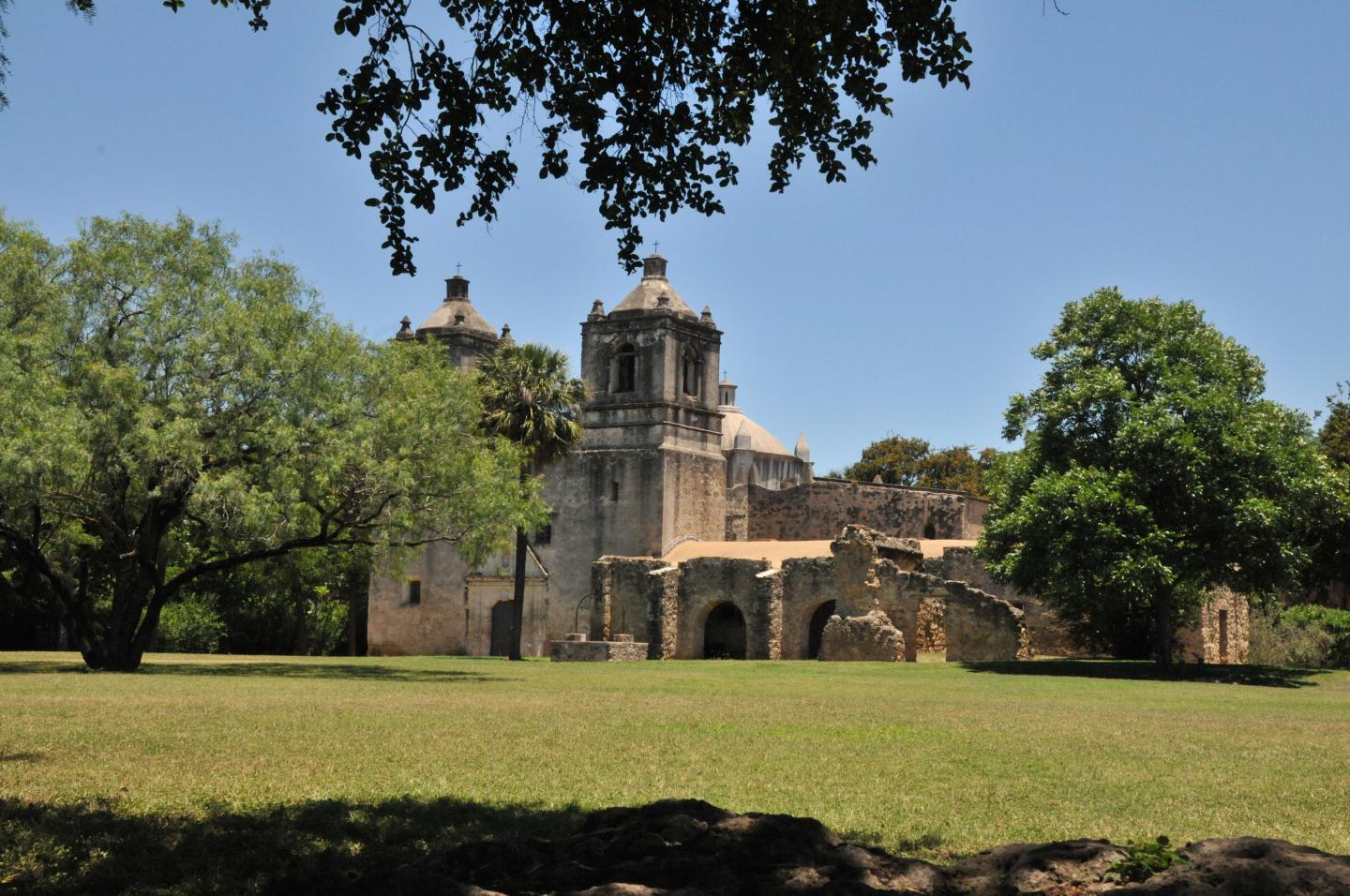
Credit: Photo Courtesy of Marcus Huerta
(San Antonio, June 25, 2019) — Working with local architecture firm Ford, Powell & Carson and the Archdiocese of San Antonio, the UTSA Center for Cultural Sustainability (CCS) will conduct a 12-month assessment of indoor climate management and make recommendations for energy-efficient upgrades at Mission Concepción.
Antonio Martinez-Molina, an assistant professor in the UTSA College of Architecture, Construction and Planning, is leading the project. He has almost a decade’s experience conducting energy-efficient upgrades to historic buildings, while ensuring the appearance of the historic structures remains intact.
“If you go to Concepción right now, you can see the walls are suffering,” said Martinez-Molina. “A 265-year-old fresco has already been lost. The point of this research is to create a new methodology to assess buildings, then provide technical guidance to mitigate future damage,” he added.
The project’s primary innovation lies in his holistic approach. It will blend historic preservation, building performance, energy efficiency and a desire to keep the people who are using the building more comfortable.
“A comfortable building is more likely to remain in use and, in turn, more likely to remain well-preserved,” Martinez-Molina explains. “Modern-day parishioners expect a certain level of comfort inside the church during the summer months and an active congregation is essential to the outstanding universal values of this UNESCO World Heritage site.”
The UTSA researchers will analyze the building’s electricity bills to get a better understanding of how much energy is being used. At the same time, churchgoers will be invited to participate in a survey gauging their comfort levels. Finally, thermal photography and other assessment technologies will be used to analyze the mission’s walls to learn where humidity is concentrated.
The CCS anticipates that the results will serve as a model for other historic stone structures in hot-humid climates throughout the South and Southwest, potentially allowing the San Antonio Missions to become pioneers in the use of energy-efficient upgrades at cultural heritage resources in the US.
The Mission Concepción project was born from another UTSA project, when CCS researchers were completing a condition assessment of Concepción’s convento structures for the National Park Service. The structures lie adjacent to and in some places share a wall with the church.
During that 2018 project, UTSA researchers William Dupont and Angela Lombardi discovered a higher degree of degradation in the walls closest to the HVAC system’s exterior condenser unit. They found green grass surrounding the condenser unit, indicating high levels of moisture in the soil, conditions that negatively impact 18th century building materials.
After seeing Dr. Lombardi’s photos, UTSA CCS Director William Dupont contacted preservationists at Ford, Powell & Carson as well as leaders at the Archdiocese to discuss the findings. Together, they embarked on a plan to study and preserve Mission Concepción.
“Of course, our colleague Carolyn Peterson at Ford, Powell & Carson (FPC) was already aware of the concerns and had a plan to upgrade the old A/C unit, which was installed in 1994,” said Dupont. “Together with Farther David Garcia, parish priest at Concepción, we discussed the necessity of having a happy congregation as well as a happy building. The Texas Historical Commission was consulted, and the Archdiocese asked FPC to engage CCS in a comprehensive analysis of the building’s performance to better assure a successful design solution.”
Martinez-Molina specializes in energy efficiency and in energy-efficient upgrades for historic buildings. He has worked on similar projects in Europe as a research fellow with the United Nations Educational, Scientific and Cultural Organization (UNESCO) and as a research associate at the Low Carbon Built Environment research center in Cardiff University in the United Kingdom.
Dupont is a San Antonio Conservation Society Endowed Professor at UTSA, an architect and expert in heritage conservation. He is active locally and internationally in heritage preservation: consulting, teaching, writing and researching. He directs the Center for Cultural Sustainability (CCS), a research center which undertakes design, documentation and planning projects with a focus on the cultural heritage continuity of places, engaging faculty and students for the benefit of people and their communities.
Lombardi specializes in historic preservation. Her research focus is on the management of historic built heritage and archaeology within contemporary urban landscapes in an international context. Her professional work has focused on the investigation and preservation of historic masonry and traditional construction techniques, and the adaptive reuse of existing buildings, including interior design.
UTSA is an urban serving university committed to tackling San Antonio’s grand challenges. Guided by its 10-year strategic plan, it is rapidly becoming a model for student success, a great research university, and an institution of strategic growth and innovative excellence.
###
Media Contact
Ingrid Wright
[email protected]
Original Source
http://www.




